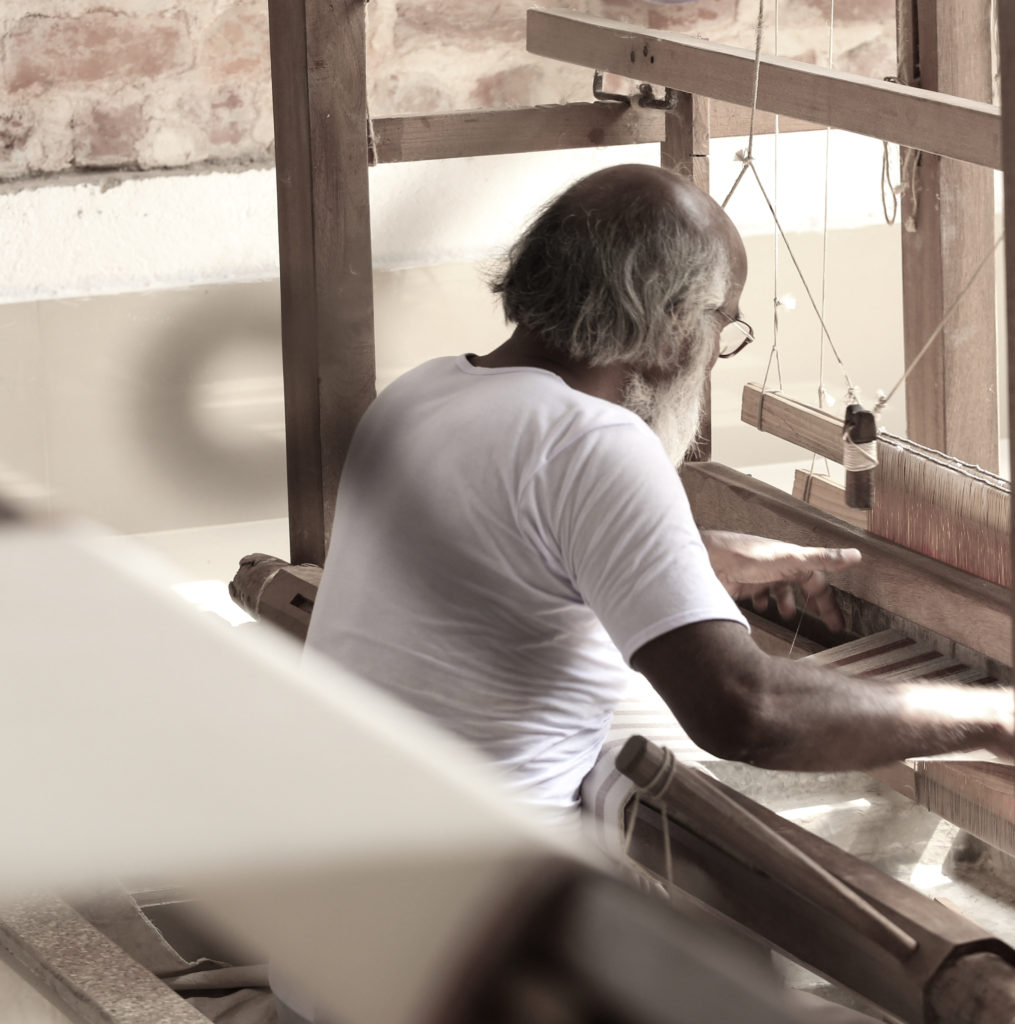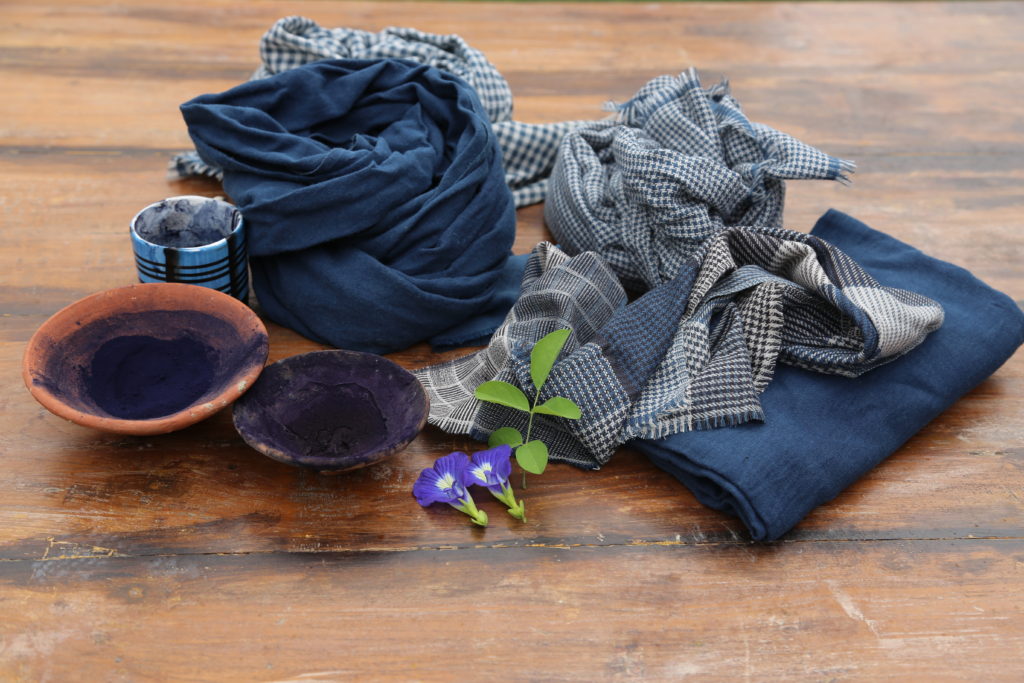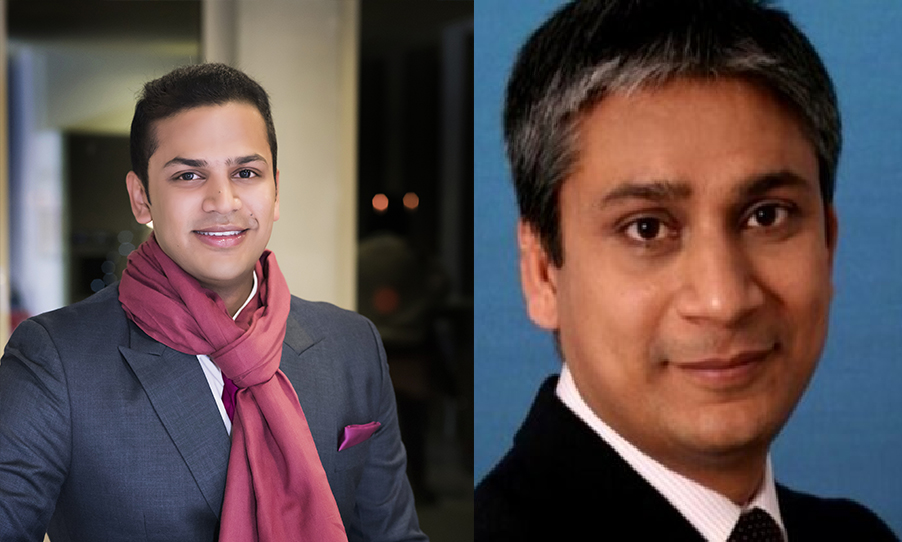In a light-filled warehouse on the outskirts of Bhagalpur, India, Naseem Ansari sits in front of a large wooden loom. In his hands are slender silk threads that he carefully guides through a small wire loop. He will repeat this gesture of filling the heddle hundreds – perhaps thousands – of times before he is ready to move onto the next step. Weaving just this one scarf will take him the entire day.
Like his father and grandfather before him, Naseem is a master handweaver. Until recently, however, he hasn’t been able to support himself with his skill. Despite Naseem’s talent and Bhagalpur’s long history as a weaving city, the industry here has crashed, a victim of too much competition and too many mechanical looms.

Naseem Ansari, one of the weavers at GamcHHa
The good news for Naseem, and for other handweavers like him, is that two HEC Paris MBA alumni are working to revive this traditional art. Project GamcHHa, the brainchild of Amitabh Thakur, MBA ’03, along with two other founders, aims to create a shared value ecosystem by selling handwoven products internationally. By bringing the craftsmanship of the handweavers of Bhagalpur to the forefront once again, they hope to act as agents of social change, providing these artisans with a good standard of living.
“We aim to deliver the highest quality products to consumers,” explains Himanshu Jain, MBA ’18, one of HEC Paris MBA alumni involved in the project. “We want to achieve this while valuing the creativity and craftsmanship of the artisans, and bring back their profession under fair and sustainable conditions.”
Developing the Product
The first step in Project GamcHHa was to create an item worthy of sale on foreign markets. Even though a gamchha is traditionally a cloth made out of cotton, Project GamcHHa’s weavers are fashioning their creations out of silk. “Just to make that change alone was a challenge,” Himanshu says. “We spent the first 24 months concentrating almost entirely on product development. We strove to find the right balance between a soft texture and the strength of the fabric.”
The end result is a velvety, durable scarf made out of Eri silk. This silk, a favorite of Buddhist monks, is known as “the fabric of peace” because it can be harvested without causing any harm to the silkworms.

GamcHHa’s scarves use only natural dyes
Once the silk is gathered and spun into thread, it is dyed using only natural colors derived from the various plants, vegetables and fruits native to the northeastern part of India. GamcHHa’s lovely mustard-colored scarves, for example, are colored by marigold flowers, and the dusty rose textiles get their hue from pomegranates.
With these earth-friendly practices firmly in place, Himanshu then consulted with HEC Paris professors Laurence Lehmann Ortega and Patrick Albaladejo for advice on how to sell GamcHHa’s scarves on the luxury market.
“The product is beautiful,” says Laurence, an affiliate professor of strategy and business policy at HEC Paris. “This is exactly the kind of purposeful luxury products that we need: doing good by buying well. On a more personal note, I gave one of GamcHHa’s scarves to my husband as a Christmas gift, and on the same day, he bought himself another one!”
Today Project GamcHHa involves just a handful of people. The goal is to eventually employ 50-100 weavers who fabricate 20,000 scarves a year. For the moment, both Amitabh and Himanshu work on Project GamcHHa while pursuing full-time careers in consulting. They hold the social-change project close to their hearts, describing it as the “love and passion of their lives.”

Himanshu Jain and Amitabh Thakur, the two HEC Paris MBA involved in GamcHHa
“Ideally, we’d like to have luxury boutiques across Europe order scarves from us so we can plan our production, have the time to develop new products and build our business gradually,” Himanshu says. Negotiations are also in the works with several of Paris’ luxury houses to carry their products.
The HEC Paris MBA Connection
Despite the 15 years separating their graduation years, these two alumni actually met thanks to the HEC Paris MBA. Amitabh was the alumni who interviewed Himanshu for admission into the degree program. After the interview was finished, the two started talking about entrepreneurship and business ideas, and Project GamcHHa came up.
“Amitabh said to me, ‘I have this idea where we can bring the handweavers back to work’,” Himanshu explains. “I’ve always been passionate about entrepreneurship. The opportunity to be associated with a concept as beautiful as GamcHHa was the best thing that could have happened to me prior to beginning my MBA at HEC Paris.
“Our goal for 20 years down the line is to have the people of Bhagalpur say, ‘Yes, I want to be a weaver, because it’s a respected business, I like the work, and I like the respect that I gain from doing this work’,” Himanshu says.
Recent Comments